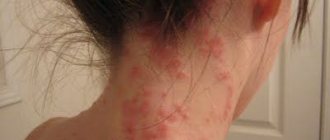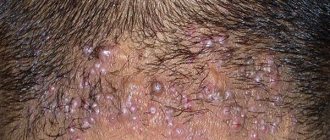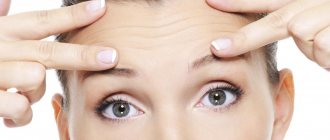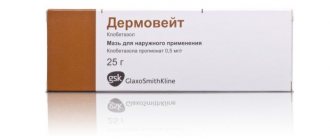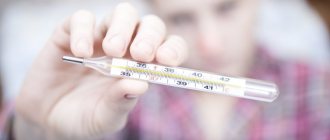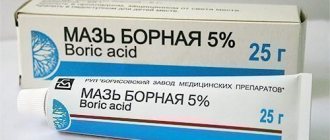Symptoms such as irritation and flaking of the scalp, as well as dandruff (small white particles on the hair and scalp) and hair loss can indicate demodicosis of the scalp. It is caused by iron mites, which are only visible under a microscope. In medicine they are called Demodex. This parasite can “live” not only on the scalp, but also in the glands and follicles. There it multiplies and receives nutrition - normal secretions, as well as the exfoliated old epidermal layer.
- Causes
- Pathogenesis
- Symptoms
- Diagnostics
- Treatment
- Treatment with folk remedies
- Prevention of demodicosis of the head
Causes
Scientific research in recent years shows that every adult and child has a tick on the head. And this does not necessarily indicate illness. But demodicosis develops only in the presence of appropriate conditions. The reason lies in a decrease in local skin immunity. In such cases, the parasite penetrates deeper than it usually is.
The physiology of the skin also matters, including the following factors:
- composition of sebaceous secretions
- adequacy of the sebaceous glands
- concomitant pathologies of the scalp
- composition of sebaceous secretions
- hormonal background
External factors that affect a person's head are also important. If girls use low-quality products (balms, paints, etc.) or those that have a drastic effect on their hair and skin, this can provoke demodicosis. The introduction of a tick is accompanied by its reproduction and the release of larvae. By touching the affected area with your fingers, you risk spreading the disease to other parts of the body.
Common causes of the disease:
- disruption of the normal balance of hormones in the body
- long courses of hormonal medications and antibacterial drugs
- low-quality cosmetics
- an incorrectly structured diet, which mainly contains sweets and chemical foods with a large number of unnatural ingredients and additives
- drinking large quantities of tea and coffee
- eating unhealthy amounts of salty foods (including snacks) and pepper
- smoking
- alcohol consumption
- chemical effects on the head
Signs of a tick under the skin on the head
Demodexes begin to actively reproduce during a period when a person experiences severe stress or serious changes occur in his body, for example, hormonal imbalance. Therefore, most patients complain of having a similar problem during the most difficult periods of their lives, when the body is weakened and requires serious treatment. If the body's defenses are not effective enough, demodexes will begin to actively reproduce, which will become noticeable through certain symptoms.
Experts note that the best and fastest results in treatment can be achieved at the stage when the mites have not yet had time to spread significantly under the scalp. With advanced demodicosis, it will take three times as long to eliminate the consequences of the disease.
The very first sign of the active development of Demodex will be severe itching on the scalp. The skin will begin to redden and peel. Many people at this stage try to treat dandruff, since the symptoms are similar, but such actions will be ineffective, since cosmetic shampoos and other products will not act on demodex.
In the process of active reproduction, ticks will secrete a lot of waste products. They are the strongest allergen for humans, so the symptoms will be corresponding. In addition to itching and redness of the skin, patients note a rash and increased activity of the sebaceous glands in the hair area. The hair will quickly become dirty and very greasy. If you do not deal with the problem at this stage, the bulbs will begin to rapidly weaken. This causes hair loss and can lead to partial baldness.
If the patient does not receive proper treatment at this stage, then seals will appear over time in the place where whole strands fall out. These are places where microscopic mites will be especially numerous. Dense areas of the skin also become covered with crusts. A vascular network will appear on the scalp. This is also a sign of hair mite activity.
Most often, under the influence of subcutaneous parasites, the symptoms of the disease appear gradually. Therefore, a person has enough time to begin proper treatment. The sooner anti-demodectic mange agents are used, the higher the likelihood of a speedy recovery.
In some people, symptoms appear very quickly, as the disease develops as quickly as possible. This is due to the fact that the patient’s body’s defenses are reduced. When immunity is restored, the disease will pass much faster, so special attention should be paid to this point.
Hair mites most often attack the head. It can spread to the hair, but demodicosis also affects the eyebrows, eyelashes and the area behind the ears. If you experience suspicious itching or rash in these areas, you should definitely consult a doctor and undergo an examination. A specialist will be able to accurately determine the cause of the problem and recommend the most effective remedy for getting rid of demodex under the scalp.
Pathogenesis
The iron mite secretes special enzyme substances that change the composition of human sebum. For example, they secrete a specific substance that causes swelling of the skin. With normally developed local protection, the swelling is eliminated. If immunity is insufficient, and also if the number of pathogenic parasites in one sebaceous gland increases to 30, symptoms of demodicosis of the scalp begin to clearly appear.
The Demodex mite is transmitted from person to person through direct contact (shaking hands, lying on the same pillow), as well as through a third object (comb, etc.).
Symptoms
Demodicosis can develop not only on the head, but also on the chest and back. Most often, this disease is found on the scalp, because there is sufficient activity of the sebaceous glands, which is influenced by local and general immunity, as well as hormone levels.
The following areas are often affected by decodecosis:
- nose
- forehead
- upper eyelid
- scalp area
Rosacea appears first. This is persistent erythema with redness and swelling of the skin. The patient also develops acne, pustules, nodules and telangiectasias. The skin is consistently red. The rash can also appear between the hairs on the head. The patient's face is covered with acne. The skin of the affected areas is characterized by thickening. The vascular network on the face is visible. The skin is irritated, tight, and the patient may complain of itching.
With demodicosis of the scalp, a person develops dandruff in the hair area and the head itches. This also happens with endocrine system disorders, stress, lack of vitamins in the body, frequent alcohol consumption, etc.
Diagnostics
For diagnosis, it is not the detection of the parasite that is important, but the determination of its quantity on the skin. There are several diagnostic methods. Scraping from the affected area of the skin does not make it possible to assess the amount of pathogen in the gland, but with its help you can find out which area is affected.
Analysis of sebaceous gland discharge involves squeezing parasites out of the gland. This method is traumatic, and, unlike the previous one, it does not make it possible to assess the affected area. The next method is a superficial biopsy (using a glass and an adhesive substance). The method of skin biopsy with further histology is also traumatic.
In some cases, an analysis of the extracted cilia and hair is prescribed. This is the only method that makes it possible to find mites in the hair follicle. When implementing the method, a person may feel pain.
What are the clinical signs of demodicosis
Patients with demodicosis may have eye irritation, itching, and changes in the skin of the eyelids associated with dermatitis. The main signs on the eyelids are thickening of the skin, loss of eyelashes, inflammation of the conjunctiva and decreased vision.
In case of active parasitism in the sebaceous glands, mites can cause the following clinical picture:
- Focal inflammation of the sebaceous glands, which leads to the formation of dense, red bumps on the skin of the face, reminiscent of teenage acne.
- Rosacea is diffuse red patches on the skin.
- Itching and burning in some cases, more often these symptoms are not observed.
Demodex mites can be found under a microscope when the affected surfaces are scraped or biopsied on the eyelid hair follicles.
Treatment
In most cases, with demodicosis of the head, local agents are used (which are applied to the affected area). Treatment must be comprehensive. It is necessary not only to exterminate the parasite, but also to strengthen the immune system. To do this, they determine why the body’s defenses have decreased. Psychological/psychotherapeutic treatment, vitamin therapy, treatment for alcoholism, and correction of the patient’s diet may be needed.
Patients with nervous and endocrine disorders must first treat their pathologies, and then eliminate demodicosis if it does not disappear on its own. The disease can occur during menopause, during puberty, from the use of oral contraceptives, or in cases of impaired ovarian function. To treat demodicosis, these causes must be eliminated. If a patient has chronic infectious diseases (not necessarily those directly affecting the skin), they need to be cured.
Treatment that directly affects the pathogen consists of using a drug such as metronidazole (Trichopol). It is given to the patient 2 times a day, 0.25 grams. Drink it during meals or immediately after. The course of treatment is 6 weeks. Then they take a break for 14-20 days, after which the course is repeated. Metronidazole affects the parasite's muscular system. Most patients tolerate the medication normally.
Possible side effects of metronidazole:
- headache
- loss of appetite
- dry mouth
Between courses, the patient is given purified sulfur 500 mg orally 2 times a day during meals. In some cases, the prescription of tinidazole (Fazizhin) is relevant. The drug is taken 4 tablets per day, course 5 days. Chingamine 250 mg 2 times a day is also effective, from 3 to 5 courses of 5 days with breaks of three days.
While a person is being treated, he should spend as little time in the sun as possible. If the skin is very sensitive to UV radiation, injections of nicotinic acid and resorcinol 250 mg 2 times a day will help.
If the patient has such a manifestation as ulcers, and also pyoderma is attached, antibacterial drugs are needed in therapeutic doses, in combination with antifungal agents. Levomycetin, erythromycin and tetracycline give the desired effect.
Medicines containing calcium, iron, phosphorus, multivitamins and xanthinol nicotinate help strengthen the body's defenses. Demodicosis is also treated with vitamin C, group B, folic and nicotinic acids, brewer's yeast, and aevit. In some cases, taking sedatives and tranquilizing drugs is relevant. Recurrent and chronic demodicosis of the head requires taking levamisole and autohemotherapy.
Nutrition is also important for treatment. Sweets, spicy foods, smoked foods, and alcoholic drinks (even beer) are removed from the diet. The food should be warm, not cold or hot, otherwise the blood will rush to the face, which will negatively affect the treatment. Overeating is not allowed. You can put the patient on diet No. 5. It is better to have as many of these foods in your diet as possible:
- vegetables
- fruits
- dairy
- greenery
- berries
External treatment of demodicosis of the head
The scalp for this disease should be treated with sulfur and ichthyol ointments, 20% benzyl benzoate, and Wilkinson's ointment. It is necessary to regularly disinfect the patient’s bed and hygiene items. You can wash your hair with tar soap. It affects the parasite, and also cleanses and nourishes the skin.
You can wash your hair with a medicinal mixture, “chatter”. To make it, combine 100 grams of dimexide, 100 grams of distilled water, 10 crushed tablets of chloramphenicol, 10 crushed tablets of trichopolum, 10 crushed tablets of nystatin. The skin is smeared with this mixture 2 times a day, the course of treatment is at least 2 weeks.
A drug called spregal, which can be bought in many pharmacies, acts on the nervous system of the causative agent of the disease in question. It contains piperonyl and esbiol, as well as auxiliary substances. It is applied to the skin, but in no case to the scalp. After 12 hours you can wash, not earlier. The course of treatment with this remedy is 1-2 weeks.
Also, as a treatment, we can recommend treating the head with a contrast shower, watermelon juice, cooled herbal infusions, cucumber juice, infusions of chamomile and linden flowers.
To treat the entire affected area of the head, use a special shampoo. But shampoo alone is not enough for effective therapy. In the evening and at night, the pathogens of this pathology enter the active phase. Therefore, treatment should be carried out in the evening.
Demodex Complex is a shampoo that kills parasites and cleanses the skin of the exfoliated epidermal layer. It is also suitable for the prevention of the disease in question. Stop Demodex helps fight the symptoms of inflammation, inhibits the development of mites and some fungi on the skin. It should be applied to wet hair while washing your hair, massage with your fingers, rinse your hair, reapply shampoo, leave for the time indicated on the bottle, and rinse.
Demodex Ovante is an American development for the prevention and treatment of decodecosis of the head. It contains natural ingredients:
- zinc
- sulfur
- birch hood
- eucalyptus extract
- extract of beech, celandine, tea tree
- natural oils
- vitamins
This shampoo is suitable for allergy sufferers; there are no contraindications for use. They need to wash their hair every evening, course: from 14 to 28 days. Manting shampoo is made in China and contains herbal ingredients. This product not only kills the tick, but also prevents it from reproducing, and also restores the scalp and hair roots. To heal quickly, you need to use one of the above-mentioned shampoos every day, as well as use other medications prescribed by your dermatologist.
Treatment with folk remedies
Complex therapy may also include traditional treatment. Lubricate and wash the skin with kerosene. It is applied to the head for three days and then rinsed well with water. This substance forms a dense film on the skin, the causative agent of decodecosis stops receiving oxygen and dies. This method is not suitable for sensitive skin.
The next method: adding birch tar to creams, ointments and shampoos. This remedy is also effective against psoriasis and eczema. Another method proven by our grandmothers: using bodyagi.
It is recommended to wash the scalp with the following products:
- infusions of eucalyptus and juniper berries
- infusion of bitter wormwood
- decoction of buckthorn bark
- infusion of elecampane
- chopped garlic solution
Folk remedies also include ingestion of herbal teas and infusions based on nettle, mint, string, plantain, etc.
Mask against demodicosis
Take Demalon ointment and calendula tincture. In the morning, rinse the affected area of skin with water and pat dry with a towel. After 15 minutes, apply the tincture, wait 5 minutes, apply Demalon in a small amount. We don’t wash it off until the evening. In the evening, after washing, wipe the skin with tincture without applying ointment. Such actions must be repeated every day, course: at least 30 days.
The most effective shampoos for demodicosis. How to treat demodicosis of the scalp (shampoo and other methods)
Hair mites can be found on the body of any person. When immunity decreases and the mite population grows, dandruff, irritation, flaking of the skin appear, and hair loss increases.
When microscopic mites thrive on your skin, causing these symptoms, the condition is called demodicosis. Shampoo for demodex is a basic care product.
During treatment they will have to replace your usual hair cosmetics.
Shampoo for demodicosis “Demodex” Ovante
The North American company Ovante has developed a shampoo based on herbal ingredients. It contains extracts of birch leaves, thamus root, oat grains, horsetail bark, borage and tea tree seed oil. The composition is enriched with vitamins B3, B5 and E, and sulfur.
The product has a high concentration, so it is applied to the hair in small quantities.
To get rid of the parasite, use shampoo in two stages. First, apply the product for 2-3 minutes and rinse, then for 3-5 minutes. Then rinse thoroughly with water again. Use daily until symptoms disappear.
Methods to combat demodicosis of the scalp
A dermatologist or a specialist in the treatment of hair diseases - a trichologist - will help you choose the right treatment. If you have demodex on your face, you should also seek the advice of a cosmetologist.
After diagnosing this disease, it is imperative to act comprehensively:
- Adjust your diet. The diet should contain enough vegetables and fruits, protein foods. Nutrition should be balanced and complete. It is advisable to exclude foods high in salt (chips, nuts, crackers), spicy foods, and strong coffee.
- Take special medications to eradicate the tick, which will be prescribed by a dermatologist. These are usually medications that contain metronidazole, and in the presence of purulent foci, antibiotics are sometimes prescribed.
- Bring the nervous system back to normal. Sedatives or herbs, vacations, and sessions with a psychologist will help.
Maintain personal hygiene and use topical preparations on the skin to relieve discomfort, the inflammatory process and get rid of demodicosis mites, reducing their number. These are various ointments, decoctions or herbal tinctures, medicinal shampoos.
Chips contain a lot of salt, so they should be excluded from your diet.
The healing properties of shampoo
The modern market and pharmaceutical companies offer a wide selection of antiparasitic products for the scalp and hair.
As already mentioned, Demodex is recognized as the most effective in the treatment of demodicosis. The advantages of this product are that the composition destroys mites, but is gentle on human hair.
After a course of using Demodex, the scalp is restored, the inflammatory process is relieved, and the amount of dandruff and flaking is reduced. Excessive oily skin disappears, which is a favorable environment for the life and reproduction of parasitic mites.
The shampoo contains:
- sulfur, which has a detrimental effect on parasites. Moreover, not only adult ticks die, but also larvae;
- zinc, which has a pronounced anti-inflammatory effect and improves blood circulation;
- vitamins and minerals that restore hair structure, reduce fragility, stimulate growth and strengthen hair follicles;
- tea tree oil as an antibacterial and cleansing agent.
Source: //bolezn.info/kozha/samye-effektivnye-shampuni-ot-demodekoza-kak-lechit-demodekoz-kozhi-golovy-shampun-i-drugie-metody.html
Prevention of demodicosis of the head
To prevent or relapse demodicosis, you need to adhere to all the rules of personal hygiene. You must have only your own bedding and bath accessories. Take care of your immunity. Vitamin prophylaxis, good nutrition, timely diagnosis and treatment of diseases, elimination of dysbacteriosis and metabolic disorders are important.
Choose pillows that are filled with synthetic materials, because feather pillows are often home to mites that cause decodecosis capitis. Pillowcases and towels should be ironed after each wash (a hot iron kills parasites). Facial scrubs are used once a week, not more often, otherwise the natural protection of the epidermis is disrupted and local protective forces are reduced.
At night, washing with tar soap is recommended. In winter and autumn, talk to your doctor about prescribing medications with zinc and selenium for preventive purposes. It is better to give up habits such as smoking and drinking alcohol. Avoid overwork, as well as excessive cooling and overheating of the skin. In summer, do not neglect hats and tinted glasses.
If someone in your family has been diagnosed with this diagnosis, wash bedding and towels at a temperature of at least +75°C. Pillows, even synthetic ones, need to be washed from time to time at +40°C. When washing, special acaricidal additives are used, for example, Allergof and Akaril.
